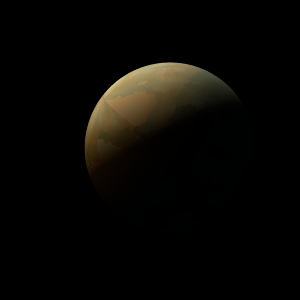|
|
Space Astro
|
Info for exoplanet "Boskin"
| Scientific (actual) data |
|---|
| Name | Kepler-251 d |
| Planet status | Confirmed |
| Radius | 0.247 |
| Orbital period | 30.133 |
| Semi major axis | 0.182 |
| Discovered | 2014 |
| Updated | 2021-02-05 |
| Tconj | 2455020 |
| Impact parameter | 0.3 |
| Publication | Announced on a website |
| Detection type | Primary Transit |
| Alternate names | 2MASS J19461589+4406211 d, K00907.02, KIC 8247638 d, KOI-907 d, KOI-907.02 |
| Star name | Kepler-251 |
| Right ascension | 296.57° |
| Declination | 44.11° |
| Mag j | 13.96 |
| Mag h | 13.596 |
| Mag k | 13.632 |
| Star distance | 948.98 |
| Star metallicity | -0.156 |
| Star mass | 0.91 |
| Star radius | 0.89 |
| Star temperature | 5526 |
| Star alternate names | 2MASS J19461589+4406211, KIC 8247638, KOI-907 |
| Wikipedia article | Kepler-251 d |
Back
| |
| Fictional info (?) |
|---|
| Suggested name | Boskin |
| Planet type | Planet |
| When viewed from Earth, this proximity to Kepler-251 means the planet can only be seen near the western or eastern horizon during the early evening or early morning.
Its north and south poles, therefore, lie where most other planets have their equators. |
| Atmosphere | Carbon dioxide | 73% |
| Krypton | 11% |
| Sulfur dioxide | 6.9% |
| Hydrogen peroxide | 5.8% |
| Formaldehyde | 2.4% |
| Hydrogen | 2.0E-6% |
| Atmospheric pressure | 0.013 bar |
 |
| No known satellites |
| Google search for Boskin |
|
Website by Joachim Michaelis
|
|
|
|